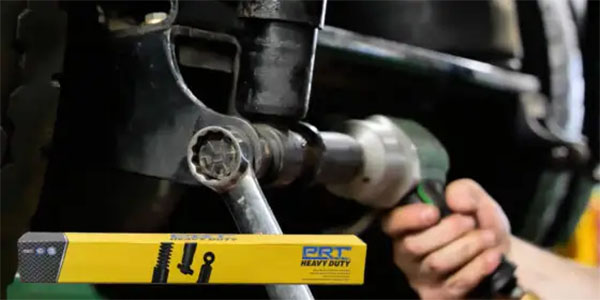Let’s look at this replacement tensioner. This bolt hex or lug is not on the factory tensioner. It is not a mistake; it is a Tech Assist feature from Litens called the Lift. With this lug, you can use a 14mm wrench or socket to move the tensioner and install the belt. On other tensioners, this lug is not there. The engineers expect you to use a socket and breaker bar on the tensioner’s pulley mounting bolt.
This can be problematic for some applications. First, there might be limited space for your tools. Second, maneuvering the belt around the socket and breaker bar can be challenging. The Liten’s Tech Assist Lift can be found on many applications and can make the job that much easier.
Here is another situation and tensioner, many replacement tensioners come in the box with the tensioner fully extended. This can make installing the tensioner complicated on some applications. In the fully extended position, bolts that secure the tensioner to the front cover can be obstructed. On some applications, moving the arm or pulley of the tension can be difficult because space is limited. For some vehicles, it might require one technician to hold the tensioner and another technician to wrap the new belt around the pulleys.
The Tech Assist Pin is installed at the Litens factory to hold the tensioner in the torqued or retracted position. When the new tensioner is installed, the new belt can be easily wrapped around the pulleys. All you have to do is remove the Tech Assist Pin to activate the tensioner. This can make some applications a one-man job.
Over the past 40 years, almost every vehicle assembled at a factory has had the accessory belt drive tensioner installed when the engine was out of the vehicle. Any assist you can get can help you to be just as efficient as an assembly line. This is where Liten’s Tech Assist Lift and Pin can help.













